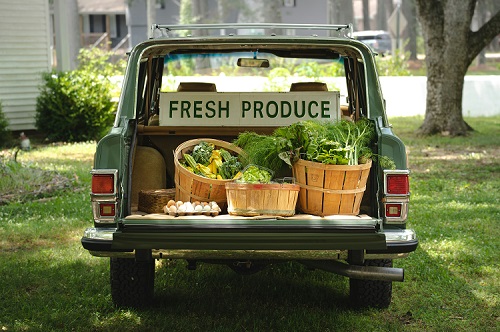Organic Farming

Overview
Organic farming involves growing crops without the use of synthetic pesticides, herbicides, or fertilizers. This method relies on natural processes and inputs to maintain soil fertility and control pests. Organic produce is increasingly popular due to the growing awareness of health and environmental benefits.
Key Products
- Fruits: Strawberries, bananas, apples, mangoes, and avocados.
- Vegetables: Tomatoes, spinach, kale, carrots, bell peppers, and cucumbers.
- Herbs: Basil, coriander, mint, parsley, and rosemary.
Steps to Start Organic Farming
- Land Preparation:
o Cost: Ksh 10,000 – 20,000
o Activities: Clear the land, test soil fertility, and prepare organic compost. - Seeds and Seedlings:
o Cost: Ksh 150 25,000 depending on how many.
o Activities: Purchase certified organic seeds or seedlings. - Organic Fertilizers and Pest Control:
o Cost: Ksh 10,000 – 20,000
o Activities: Use compost, manure, and bio-fertilizers; implement natural pest control methods such as neem oil and intercropping. - Irrigation System:
o Cost: Ksh 10,000 – 15,000
o Activities: Set up a drip irrigation system to ensure efficient water use. - Tools and Equipment:
o Cost: Ksh 10,000 – 15,000
o Items: Hoes, spades, watering cans, pruning shears, and wheelbarrows. - Labor:
o Cost: Ksh 5,000 – 10,000
o Activities: Hire labor for planting, weeding, and harvesting. - Marketing:
o Cost: Ksh 5,000 – 10,000
o Activities: Design branding materials, create a social media presence and participate in local farmers’ markets.
Detailed Costing
Land Preparation – ranges between 10,000 and 20,000
Seeds and Seedlings – ranges between 15,000 and 25,000
Organic Fertilizers – ranges between 10,000 and 20,000
Irrigation System – ranges between 10,000 and 15,000
Tools and Equipment- ranges between 10,000 and 15,000
Labor – ranges between 5,000 and 10,000
Marketing – ranges between 5,000 and 10,000
Total Estimated Cost – between 50,000 and 100,000
Organic Farming Practices
- Soil Management:
o Use crop rotation and cover cropping to maintain soil health.
o Regularly add compost and organic matter to the soil. - Water Management:
o Implement rainwater harvesting systems.
o Use drip irrigation to reduce water wastage. - Pest and Weed Control:
o Use natural predators and beneficial insects to control pests.
o Employ manual weeding and mulching to manage weeds. - Crop Diversity:
o Plant a variety of crops to reduce disease spread and improve soil fertility.
o Practice intercropping and companion planting.
Profitability and Market Demand
Organic produce is in high demand, especially in urban areas where consumers are more health-conscious. Selling through local farmers’ markets, organic food stores, and directly to consumers can ensure higher profit margins. Additionally, partnerships with restaurants and supermarkets that prioritize organic products can provide steady revenue streams.

